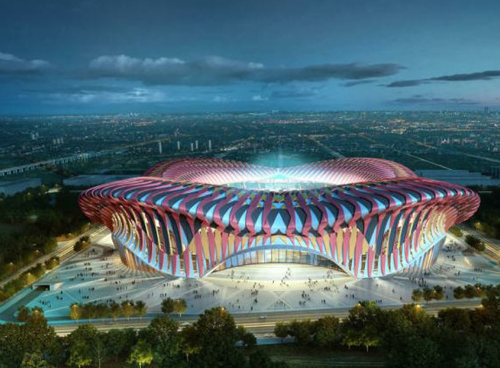BEIJING Chinese champions Guangzhou Evergrande on Thursday began building a new stadium costing 12 billion yuan ($1.7 billion) and boasting a 100,000 capacity, making it one of the world’s largest arenas. It will be marginally larger than Barcelona’s Camp Nou and is scheduled to be ready by the end of 2022, Xinhua news agency said. Guangzhou Evergrande Football Stadium will have an eye-catching lotus flower design wrapped around it, a nod to the southern city’s status as China’s “Flower City”. The stadium will be — for a time at least — the world’s largest football venue, until Camp Nou expands to 105,000 seats after its ongoing redevelopment. Eight-time Chinese champions Guangzhou, who are coached by Italian World Cup winner Fabio Cannavaro and have won the AFC Champions League twice, average about 50,000 fans for home matches. China’s government is making an aggressive push to promote football in the country and several major new stadiums are being built around the nation. Evergrande’s Chinese Super League rivals Shanghai SIPG are constructing a new arena that will seat 33,000 and is expected to be finished in 2021. China will host the newly expanded 2021 FIFA Club World Cup and the 2023 AFC Asian Cup, while Shanghai is interested in holding the Olympics. In 2012, Chelsea made a bid to buy the iconic Battersea Power Station in southwest London, with a plan to redevelop it into a 60,000-capacity stadium. The thinking, at the time, was any plan to increase capacity at Stamford Bridge made no economic sense. Plans for the new ground included preserving the building’s landmark four chimneys and also the Grade II listed turbine hall and control room. The atmosphere would have been, ahem, electric. They didn’t win the bid. The Catalan club went back and forth for a while over whether to build a new stadium or redevelop their iconic home the Nou Camp. One proposal included a stadium off the bay of the city, connected by a bridge. In the end they settled on increasing the capacity of the Nou Camp year-on-year, with a goal of 105,000 by the 2021-22 season. We’d settle for any kind of stadium right now. Football, we miss you.—Agencies










